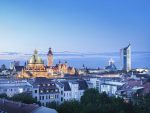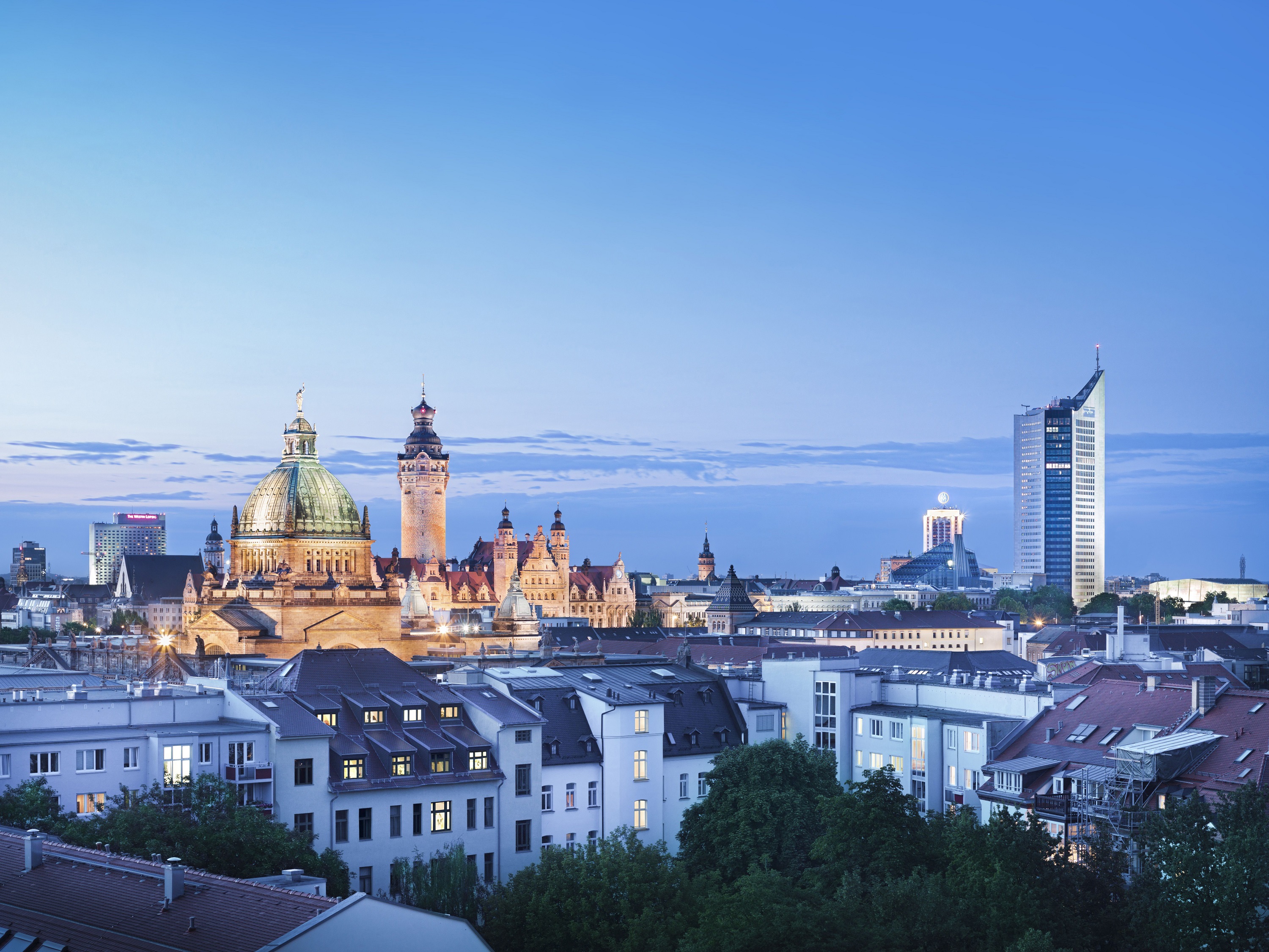
Bryn Frank has travelled widely in Germany, but has a special fondness for the less well known east and north east of the country. It was probably sparked off by an unlikely detour he took in 1985.
We hadn’t expected so much snow – and we are cold and wet. Now three ‘Vopos’ (Volkspolizei) are eyeing us closely. One beckons us briskly towards the long table where they are sitting. I hesitate – what are we letting ourselves in for here? – but he insists.
They are lounging at the only table in the cellar restaurant of Leipzig’s Altes Rathaus (Old Town Hall) that still has places free. To my surprise they move along – grudgingly – to make room for us four. Better still, the place is suffused by a nice warm fug.
There are curious glances. Heads turn. But at this stage I care less about the Cold War and the political divide than feeding a boy of nine and a girl of seven who, most of the way in the car from the East German border near Goslar (we should have realised the weather was closing in) have been agitating about their favourite grilled pork sausage and fried potatoes. “Will we get them there too, dad?”
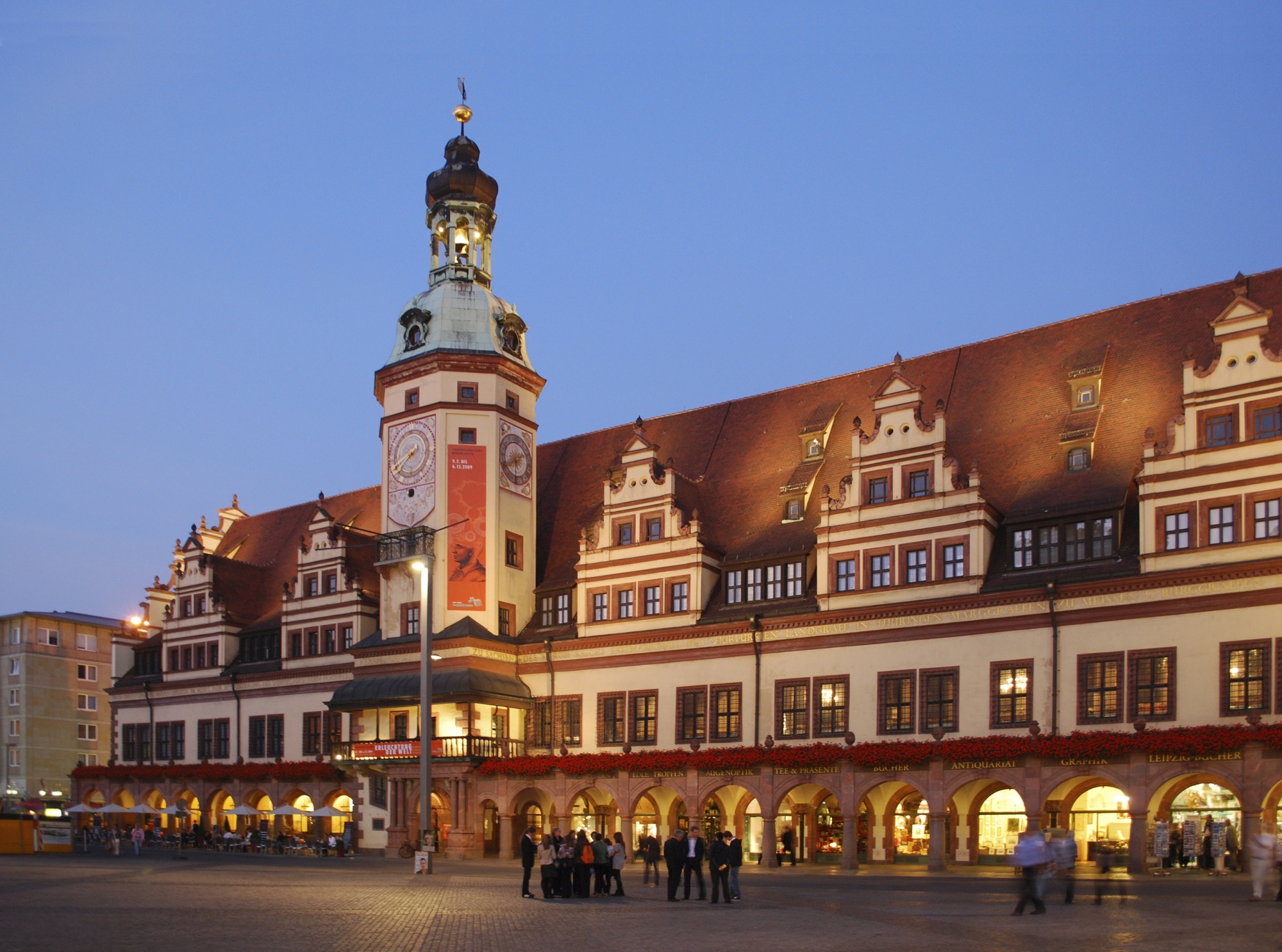
Even then, in February 1985, we found Leipzig thrilling. Those gaunt 19th century municipal buildings, black against the snow, slithering about in the park on deep-frozen lakes, a performance in the Gewandhaus concert hall of Beethoven’s Eroica for the price of a London tube ticket, seeing a massive locomotive getting up steam in the biggest terminus railway station in Europe.
Five years later Leipzig and the rest of the German Democratic Republic came in from the cold.
In late summer sun 2017 the city gleams. The political riots are long gone, and the place is a riot of colour. There are Hapsburg-yellow mansions from the time of ‘Kaiser Bill’, golden cupolas, Baroque frills and flounces as pink, cream and green as Neapolitan ice creams. And Art Deco on every other corner – it’s frivolous and fun. Threaded through by parks, woods and gardens Leipzig sometimes feels more like a prosperous spa than the major industrial city it is.
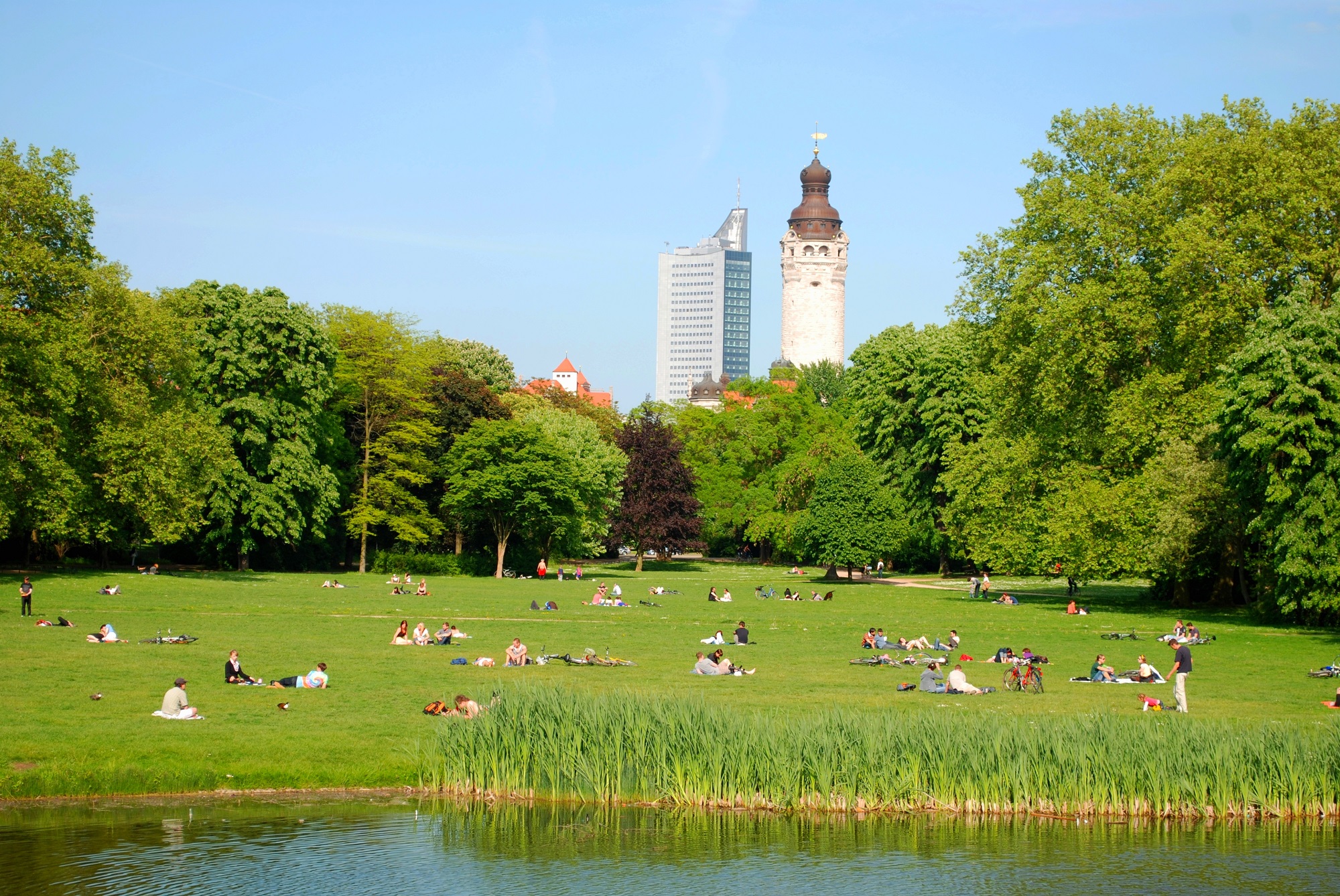
With a day to myself after being in Berlin I take a stroll on a sunny morning through the Johanna Park towards Augustusplatz to pick up a ticket from the Opera House for Mozart’s Marriage of Figaro – which is on a sell out run. I’m stopped in my tracks by the sight of a heron in a tree by a lake. Unfazed by joggers and cyclists, it looks like one of those plastic fakes you see in garden centres. Motionless for ten minutes and counting, ready for its breakfast, it is eyeing a shoal of tiny red fish. Rus in urbe indeed!
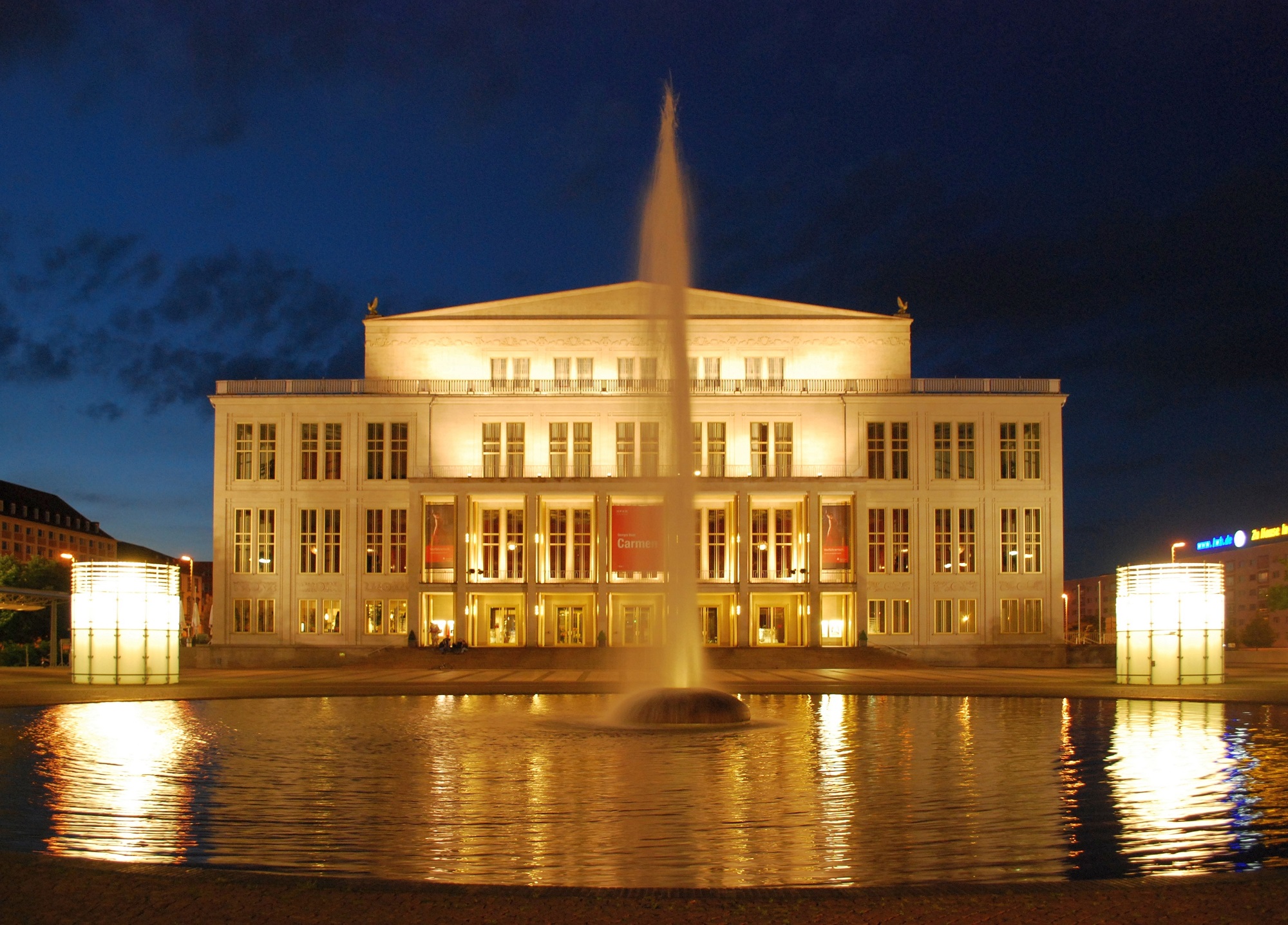
Opposite the more famous Gewandhaus, the Opera House is outwardly austere, but I find it elegant. The interior is exquisite, a spacious symphony in wood surfaces of different textures and colours.
There’s a tram interchange here, an excuse to jump on one, because I have been invited to lunch in a restaurant and brewery a bit too far away to walk to that famously rubbishes the idea that traditional German and middle-European food is stodgy and tasteless. Among surroundings reminiscent of a more elegant age – the Bayerischer Bahnhof, in the restored part of a railway terminus of 1842 – you can tuck into favourites such as Wiener Schnitzel and goulash and, in season, succulent game dishes.
It seems rude to turn down a second portion of the Apfelstrudel and a third glass of Leipzig Gose, a tangy, citrussy beer famously brewed only here. So I walk it off, unsteadily, towards St Thomas’s Church. I have an appointment there with J S Bach, or more accurately a motet and one of his cantatas.
What a fire Bach lit as choirmaster and composer at St Thomas’s, from 1723 until his death in 1750. He was followed to Leipzig by Telemann, Felix and Fanny Mendelssohn, Liszt, Robert and Clara Schumann, Mahler, Grieg and many others. Wagner was born and spent much of his life here, Schubert and Mozart came for their holidays.
Was it something in the water? More likely that Leipzig’s great wealth meant that there was financial support for composers and musicians.
There’s a queue outside St Thomas’s, but after only 20 minutes they let us in. People point out Bach’s tomb by the altar. The candles are lit, and the sailor-suited boys of the choir take their places. As the celestial music soars up and around us a woman behind me whispers: “How DO they get that sound? It makes me go all tingly”.
I make time later for coffee with friends at the Telegraph Café, where cool jazz even on the sound loop is a reminder that there’s a strong jazz scene in the city – just one part of its famously pulsating night-life. And I hear that Middlesbrough’s own heart-throb singer-guitarist Chris Rea is in town, performing to thousands at The Arena.
Its tall fountain floodlit, with trams fussing about like glow-worms, Augustusplatz is impressive after dark. In an opera house even more sublime by night than by day Mozart’s own favourite opera comes to an end, quite late.
I walk through the almost deserted city centre towards my hotel right by St Thomas’s. As I approach the corner of the Altes Rathaus I spot, hardly discernible in the dark, a dozen or so people standing in front of a busker. Some busker! A girl of perhaps 18 is behind a keyboard, accompanying herself in a Schubert song. I think it is ‘To Music’. Her soaring, delicate soprano voice has us transfixed. As she ends, I drop some coins into violin case by her feet, and as she continues with another Schubert song – ‘Ave Maria’ – I walk on towards my hotel, my footsteps on the cobbled street the only sound except, briefly, a distant tram.
In a now-silent corner of this enchanting city Bach has been left to slumber into eternity. My room at the back of the hotel right by the church he made his own overlooks a moonlit garden. The only thing that seems to be lacking is a nightingale, but I suppose that’s a bit too much to ask even for Leipzig.

